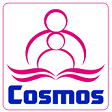CHARACTERIZATION OF CUTANEOUS MELANOMA (CM): a narrative review
DOI:
https://doi.org/10.54578/unesc.v7i2.397Resumo
Melanoma is the most aggressive type of skin cancer due to its metastatic potential, and its incidence has increased considerably in recent decades. Sun exposure to ultraviolet A and B irradiation remains the main risk factor for the development of this type of cancer, however, other factors involved are family history, artificial tanning, melanocytic nevi, and low phototype and feomelanin photosensitization by visible light (VL). Through early diagnostic detection of the malignant lesion, it is possible to initiate therapy in an early and curative way, increasing survival with a subsequent decrease in the overall mortality rate. Advances in immunotherapy and targeted therapy have changed treatment paradigms and improved the prognosis of late-stage disease. Due to the high prevalence of the disease worldwide, the purpose of this review was to characterize the cutaneous melanoma (epidemiology, etiology, pathophysiology, clinic, diagnosis, treatment, prognosis, prevention and psychosocial aspects) such as prevention of the melanocytes against Visible Light (VL).
Downloads
Publicado
Como Citar
Edição
Seção
Licença
Copyright (c) 2023 UNESC em Revista

Este trabalho está licenciado sob uma licença Creative Commons Attribution-NonCommercial 4.0 International License.



















